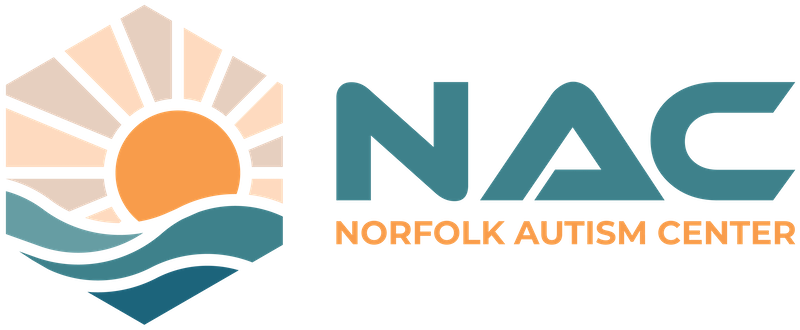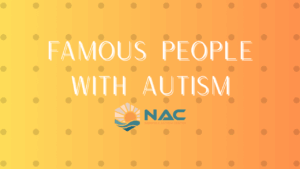At Norfolk Autism Center, we understand that every autistic child has a unique way of communicating with the world around them. Families often encounter a variety of communication styles and may feel uncertain about how best to support their child’s needs. Our team believes in compassionate, child-led care anchored in evidence-based ABA therapy principles. In this article, we’ll explore how understanding and embracing your child’s communication style can strengthen connection, reduce frustration, and create meaningful progress.
Embracing Diverse Communication Styles
Acknowledging Communication Differences
Autistic children may express themselves through a range of methods—from speech and gestures to augmentative and alternative communication (AAC) devices and sign language. Some children are primarily nonverbal, while others may speak in short phrases or scripts. It’s common for parents to feel confused or overwhelmed at first, especially if they’re expecting traditional spoken language. The important thing to remember is that all communication methods are valid and worthy of respect.
Common Challenges
Many families face obstacles such as difficulty interpreting body language or vocalizations, or struggles with initiating and maintaining conversations. These challenges can affect everyday routines—from getting dressed in the morning to expressing preferences at mealtime—and influence family dynamics. Recognizing the root of these difficulties is the first step toward facilitating stronger and more effective communication.
Why Communication Matters in Daily Life
Impact on Routines and Relationships
When communication flows more naturally, daily routines run more smoothly, and a child experiences less frustration and anxiety. Parents, siblings, and extended family members also benefit from clearer connections and mutual understanding. Simple interactions like choosing a snack at the grocery store or playing a game with siblings can become meaningful opportunities to build communication skills and self-confidence.
Child-Led and Evidence-Based Approaches
At Norfolk Autism Center, our approach integrates child-led methods with evidence-based ABA strategies. By prioritizing a child’s interests, pacing, and preferred mode of expression, we foster a sense of autonomy and motivation. This balance between following the child’s lead and systematically teaching communication skills is key to long-term success and skill retention.
Practical Strategies and Tools for Communication
1. Augmentative and Alternative Communication (AAC)
What Is AAC?
AAC includes any form of communication that supplements or replaces spoken language. This can range from picture exchange systems and communication apps on tablets to speech-generating devices. The goal is to provide a consistent means for your child to express wants, needs, and ideas.
How ABA Therapy Supports AAC
Our ABA therapists collaborate with families and speech-language pathologists to introduce AAC devices at a comfortable pace. We systematically teach children how to navigate the device and encourage them to use it in natural settings—such as requesting a favorite snack during mealtime or asking to play with a certain toy at home. By embedding AAC use in daily routines, children learn that communication has real power and value.
2. Visual Supports
Why Visuals Are Helpful
Many autistic children process information more effectively when it’s presented visually. Examples include visual schedules, choice boards, and social stories. These tools help children anticipate transitions, make choices, and understand social cues.
Using Visuals in Various Settings
- Home: A morning routine chart can outline each step of getting ready, reducing stress and uncertainty.
- School: Visual timers or token boards can help a child stay on task and learn new concepts.
- Community: A picture-based shopping list or outing schedule can aid in preparing for new environments and activities.

3. Sign Language and Gestures
Benefits of Signing
Sign language offers a tactile and visual method of communication that can be particularly supportive for children who find speech challenging. Simple signs for “more,” “help,” or “stop” can significantly reduce frustration.
Integrating Sign Language
Our team can teach families basic signs and model how to use them throughout the day. Whether at home, in the classroom, or on a family outing, consistently pairing signs with verbal cues reinforces language development and helps the child link meaning to both spoken words and gestures.
4. Encouraging Verbal Communication
Building Foundational Language Skills
For some children, developing spoken language is an attainable goal. Our ABA programs target foundational skills such as making sounds, forming syllables, and imitating words. By rewarding efforts and celebrating successes, we maintain motivation and make practicing verbal skills an engaging process.
Natural, Motivating Interactions
Rather than focusing on drills, we incorporate verbal practice into meaningful activities—like playing a child’s favorite game or reading a beloved book. When a child sees that words lead to positive, real-life outcomes (like getting a turn with a toy), they become more inclined to keep trying.
Creating a Supportive Environment
Consistency and Structure
Consistency across settings is vital. Collaboration between parents, therapists, and educators ensures that communication tools and strategies are used effectively at home, at school, and in the community. Regular check-ins help everyone stay aligned on goals and progress.
Recognizing and Responding to Communication
Autistic children often communicate through behaviors, facial expressions, or body language before developing more formal methods. By staying attentive and responding calmly, you show your child that their attempts to interact are noticed and valued. A smile, a nod, or a supportive word can go a long way in reinforcing communication.
Building Positive Relationships
Establishing a safe and trusting relationship sets the stage for successful communication. Spend quality time together, follow your child’s interests, and engage with them on their level. Eye contact and shared attention may look different for every child, so be open to alternative ways of connecting—such as parallel play, shared enjoyment of a favorite activity, or repeating a child’s sounds or gestures as a form of conversation.
How Norfolk Autism Center Can Help
At Norfolk Autism Center, we believe in working hand in hand with families in Southeast Virginia to create personalized communication plans. Each plan honors your child’s preferred communication methods and builds on their strengths. By partnering with speech therapists, special educators, and other professionals, we offer a well-rounded approach that supports progress at home, school, and beyond.
Key Components of Our Approach
- Child-Led Focus: We pay attention to each child’s interests, allowing them to guide activities and pace.
- Evidence-Based Methods: Our ABA programs use research-backed strategies to foster meaningful growth.
- Family Collaboration: We provide training and resources for parents, siblings, and caregivers, ensuring consistency and confidence in supporting communication.
- Ongoing Support: We continuously monitor progress and adapt strategies so that your child’s communication skills evolve over time.
Moving Forward Together
Facilitating communication with your autistic child can be a fulfilling journey when approached with empathy, structure, and evidence-based strategies. At Norfolk Autism Center, we are dedicated to helping families in Southeast Virginia discover the tools and approaches that help each child flourish. By celebrating every form of communication and working collaboratively, we can foster growth, connection, and confidence for your whole family.
If you’d like more information about our ABA therapy programs or want to learn more about how we support diverse communication methods, please reach out to us. We’re here to guide you every step of the way, empowering you and your child to communicate effectively and live with greater harmony and understanding.



